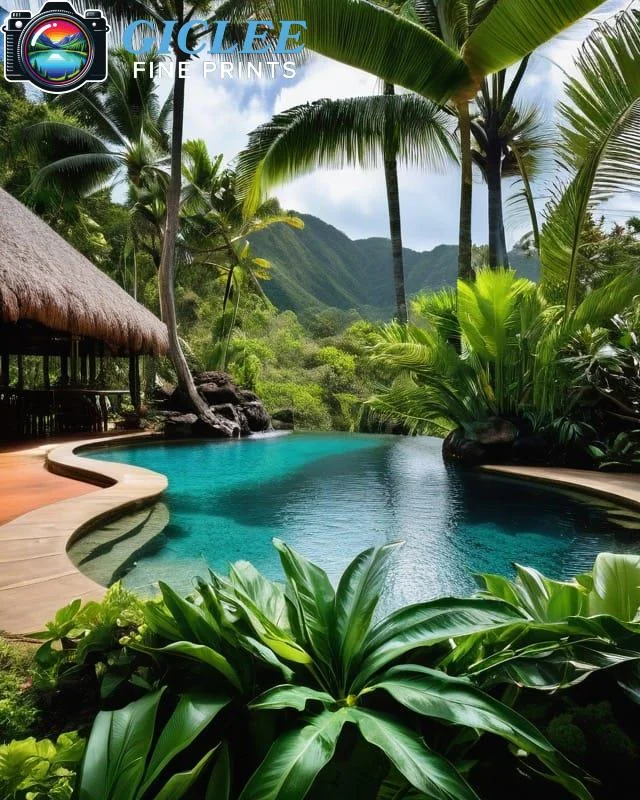
Decorating your walls can be one of the most exciting parts of personalizing a home or office, but it’s not always straightforward. With so many styles, sizes, and mediums to choose from, selecting the perfect wall art can feel overwhelming. At Giclee Fine Prints, we’re here to help simplify the process—guiding you toward art that harmonizes with your space and resonates with your personal taste.
Start with a Clear Vision
Before you purchase or print anything, define the mood you want a particular room to convey. Are you aiming for a cozy, rustic vibe, or an ultramodern aesthetic? Questions to consider:
- Color Palette: Scan the furniture, rugs, or existing decor. Pick art that complements or provides a tasteful contrast to those hues.
- Intended Atmosphere: Calm spaces (like bedrooms) might suit soft, tranquil art. Meanwhile, living rooms or offices could benefit from bolder, more stimulating pieces.
- Personal Touch: Don’t forget, art is a form of self-expression. If you love vibrant abstracts or serene landscapes, lean into that passion.
Result: A unified room, where your wall art fits seamlessly, tying your color scheme and style aspirations together.

Factor in Size and Scale
Finding the right size can be a balancing act—too small, and it gets lost on a large wall; too big, and it overwhelms the room:
- Measure Your Wall Space: Note the height and width of the target wall. As a rule of thumb, artwork should occupy around two-thirds to three-quarters the width of the furniture below it.
- Consider Multiple Pieces: For extra-large walls, arranging several smaller pieces can create a cohesive gallery effect.
- Leave Breathing Room: Avoid “wallpapering” your entire space with art. Negative space can highlight key pieces and prevent visual clutter.
Pro Tip: Use painter’s tape or paper cut-outs in the shape of your potential art to visualize how different sizes feel before committing.
Choose a Medium That Fits the Aesthetic
Art mediums go far beyond the classic framed poster. Experimenting with different substrates can add depth and dimension:
- Canvas: Offers a traditional, textured feel—perfect for everything from family portraits to large-scale abstracts.
- Metal Prints: Sleek, contemporary, and highly reflective. Great if you crave bold colors and a modern edge.
- Fine Art Paper: Ideal for detailed photography or delicate illustrations. Framing behind glass can give a refined, gallery-like appearance.
- Peel-and-Stick Wall Art: A flexible option if you’re renting or enjoy rotating designs frequently without leaving nail holes.
Outcome: By matching medium to both the art style and your overall decor, your chosen piece will feel organically part of your environment.

Plan Your Placement and Lighting
It’s not just about picking the right piece—how you display it also matters:
- Eye-Level Hanging: Generally, keep the center of your artwork at about 57–60 inches from the floor (the average eye level). Adjust slightly for furniture or if you have particularly tall ceilings.
- Spot Lighting: Use directional lights or picture lights to highlight key pieces, especially in living rooms or hallways. Ensure any bulbs don’t emit excessive heat that could damage sensitive prints.
- Avoid Glare: If your piece is behind glass or has a glossy finish, position it where light reflections won’t obscure it. Consider anti-reflective coatings or matte finishes if glare is an issue.
Why It’s Crucial: Correct hanging height and mindful lighting can elevate your art from a simple wall accessory to a captivating focal point.
Experiment with Themes and Arrangements
Don’t shy away from grouping art together to form a cohesive display:
- Gallery Walls: Mix and match frames, mediums, and sizes in a grid or organic layout. Ensure a unifying element, like consistent frame color or theme, to avoid visual chaos.
- Shelf or Ledge Displays: Lean framed art against the wall on floating shelves. Easy to swap pieces without creating new holes in the wall.
- Rotational Systems: If you’re an art collector or have multiple prints, consider a rotation schedule—seasonally or annually. It keeps your decor fresh and your collection active.
Result: With purposeful curation and arrangement, your wall art becomes an ever-changing narrative that reflects your tastes, stories, and experiences.
Contact Us
Our address is: 3816 Pioneer Trail Ste #3, South Lake Tahoe, CA 96150
Email: Info@gicleefineprints.com
FAQs
Focus on the room’s main accent hues—perhaps from a rug, couch, or curtains. Selecting artwork that matches (or cleverly contrasts) these hues ensures harmony.
Absolutely! Eclectic mixes can spark conversation. Just find a unifying element (like a color scheme or framing style) to prevent the display from feeling too random.
A single oversized statement piece can look stunning, or try a carefully arranged gallery wall with varied frames. Always measure to avoid prints that look too small or too big.


